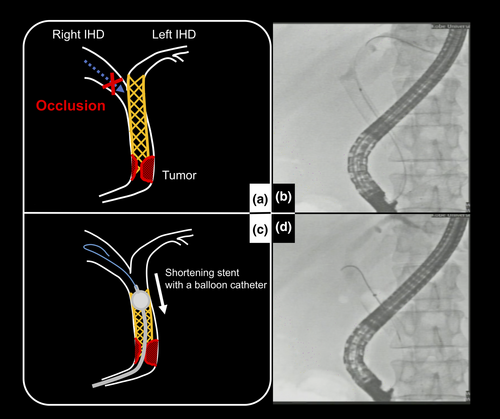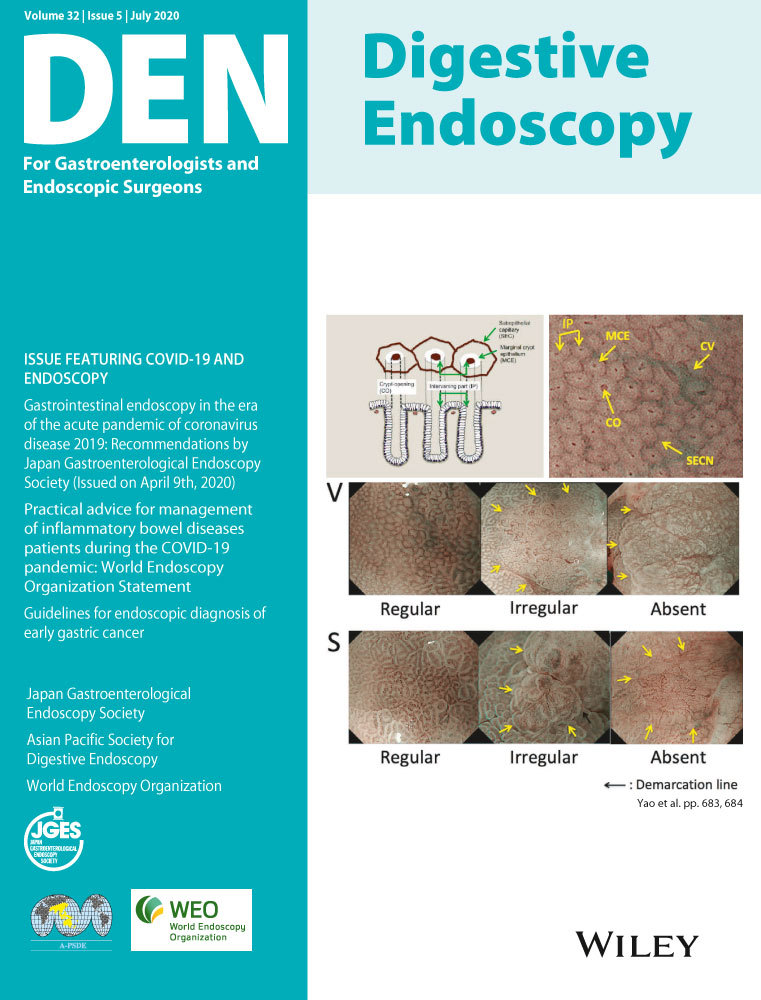Troubleshooting for severe acute cholangitis caused by proximally migrated metal stent into the intrahepatic bile duct: Stent shortening via a balloon catheter
Abstract
Watch a video of this article
Brief Explanation
A 51-year-old man was referred to our hospital for stage IV pancreatic head cancer. Due to the cancer, fully covered and uncovered metal stents (MS) were inserted for biliary and duodenal obstructions, respectively (Fig. 1a,b). One month later, he presented with septic shock. Based on clinical data, the patient was diagnosed with severe acute cholangitis caused by a proximally migrated biliary MS. Emergency endoscopic retrograde cholangiopancreatography revealed occlusion of the right intrahepatic bile duct (IHD) by MS migration into the left IHD, causing severe acute cholangitis (Figs 1c,d,2a,b). Quick biliary drainage was required because his vital signs were unstable. However, the migrated MS could not be easily retrieved because its lower end was located above the tumor. Without retrieving the migrated MS, we instead successfully shortened the MS with a balloon catheter to release the blockage of the right IHD and performed endoscopic nasobiliary drainage of the right IHD (Fig. 2c,d, Video S1). After the acute cholangitis improved, the migrated MS was endoscopically retrieved without adverse events.


Proximal migration into the IHD by MS is an extremely rare complication.1, 2 MS migration into the IHD causes complete occlusion of the opposite IHD, leading to severe acute cholangitis. Endoscopic retrieval of a migrated MS is generally simple and optimal to improve these conditions. Although several retrieval techniques with forceps or balloon have been described,1, 3 it can be difficult to quickly retrieve the MS. In the current case, shortening the stent with a balloon catheter allowed easy and fast drainage of the IHD occluded by the MS without retrieval of the migrated MS. Additionally, this method does not require special devices or skills. Therefore, it should be an effective rescue method for severe acute cholangitis caused by proximally migrated MS into the IHD when retrieval of the migrated MS is difficult.
The authors declare that they have no conflict of interest.
Funding Information
None.




